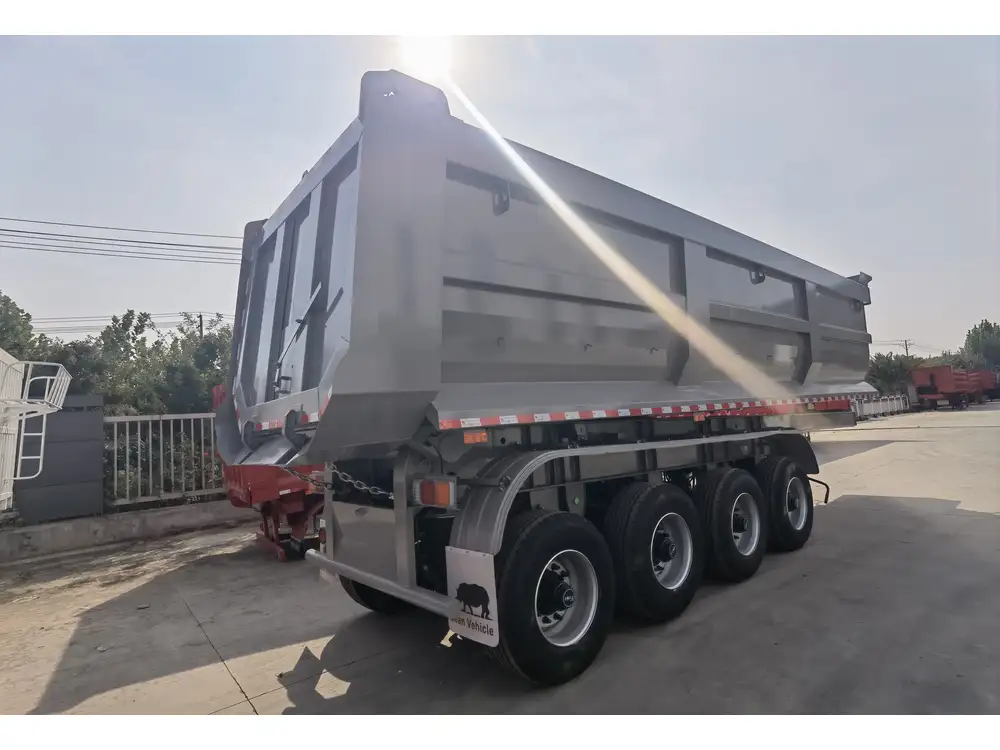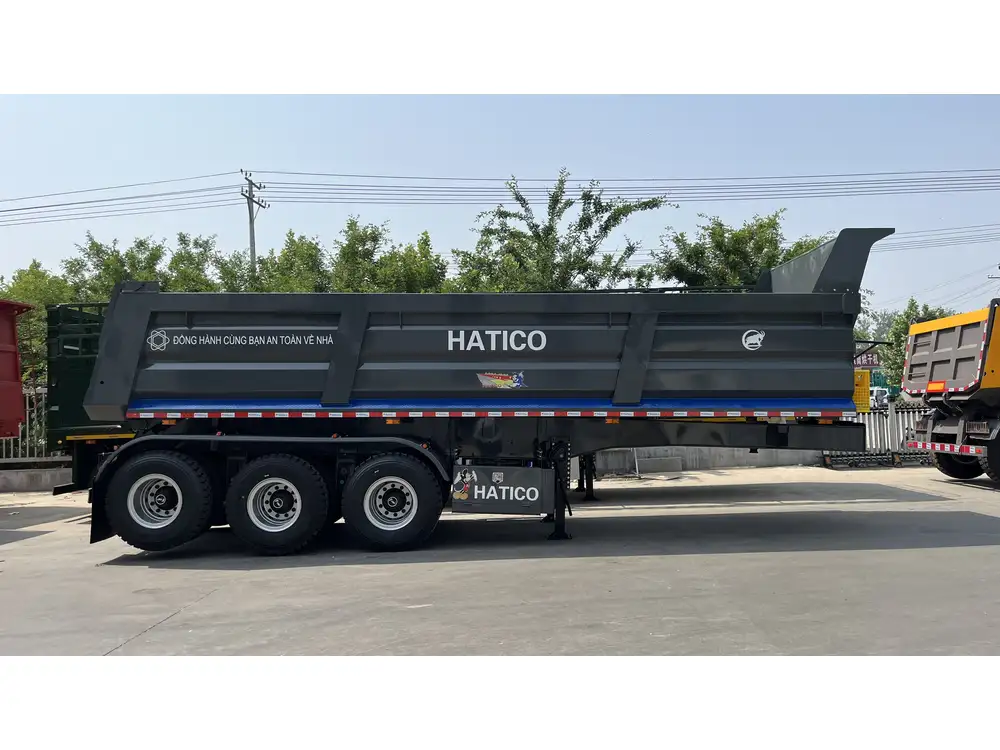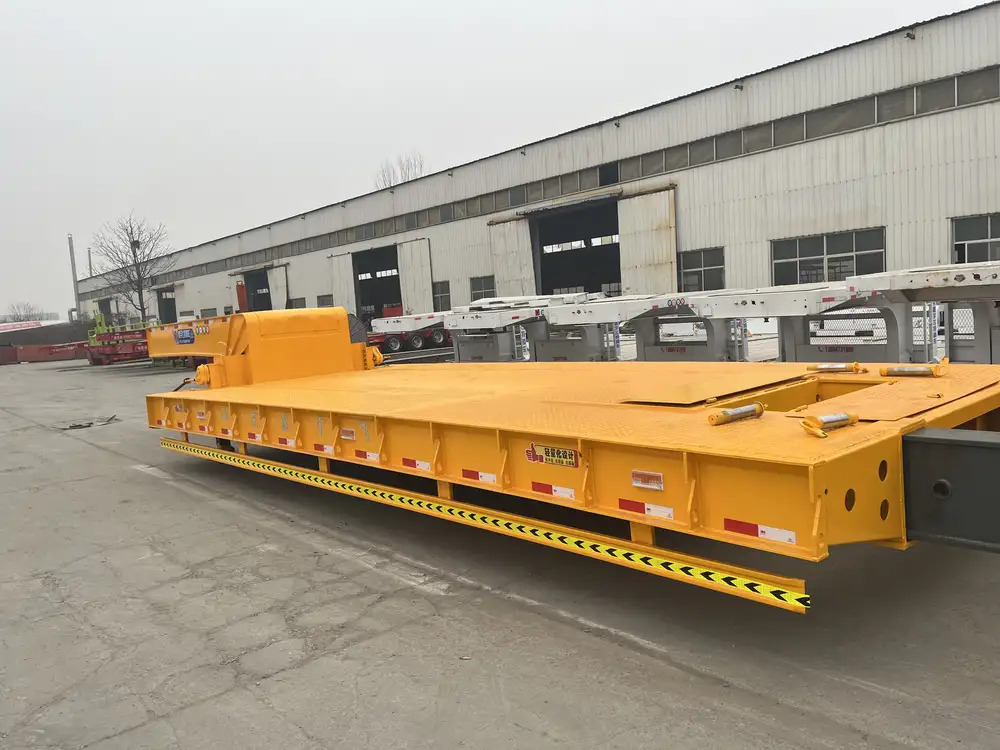Spreading gravel may seem like a simple task, but performing it efficiently and effectively requires proper technique, the right tools, and a clear understanding of your project goals. In this guide, we will delve deep into the nuances of using a dump trailer to spread gravel. Whether you are working on a driveway, pathway, or preparing a base for a construction project, this article will equip you with the knowledge and insights necessary to achieve a professional finish.
Understanding Your Dump Trailer
Key Features to Consider
Before we dive into the how-to aspects of spreading gravel, it’s essential to familiarize ourselves with the capabilities of your dump trailer. Key features to evaluate include:
| Feature | Importance |
|---|---|
| Capacity | Determines how much gravel you can haul at once |
| Hydraulic System | Ensures efficient dumping and spreading |
| Trailer Length | Impacts maneuverability and reach |
| Weight Distribution | Affects stability during dumping and driving |
| Side Height | Influences the amount of material that can spill over |
Understanding these features will help you choose the correct dump trailer for your specific gravel spreading needs, ensuring both efficiency and safety.

Preparing for Gravel Spreading
Assessing Site Conditions
Before loading your dump trailer, evaluate the area where you intend to spread gravel. Consider the following:
- Surface Stability: Ensure the ground is firm to support your vehicle and trailer.
- Drainage Patterns: Recognize any natural slopes which may influence how gravel should be spread.
- Access Points: Identify where the trailer can enter and exit without obstruction.
Selecting the Right Gravel Type
Not all gravel is created equal. Depending on your project, you might need:
- Crushed Stone: Ideal for driveways and high-traffic areas due to its angular shape and compacting properties.
- Pea Gravel: Suitable for pathways and decorative landscaping, as it is smooth and round.
- Class 5 Gravel: Commonly used for road bases, providing a good balance between affordability and durability.

Loading Your Dump Trailer
How to Load Gravel Safely
Loading your dump trailer appropriately ensures a balanced load, which is vital for safety and performance.
- Position the Trailer: Park your dump trailer on stable ground, ideally with a slight incline for ease of unloading.
- Use a Loader: Utilize a front-end loader or an excavator to scoop gravel into the trailer, ensuring an even distribution across the surface.
- Shovel and Rake: If loading manually, evenly distribute gravel using a shovel, ensuring that the weight is balanced from front to back and side to side.
Spreading Gravel Using the Dump Trailer

Step-by-Step Spreading Technique
Now that the trailer is loaded, it’s time to spread the gravel. Follow these detailed steps for optimal results:
Positioning the Vehicle: Drive the dump trailer to the desired location, ensuring that there is ample space for maneuvering.
Dumping the Gravel:
- Align the trailer edge with the edge of your target area to minimize over-spill.
- Engage the hydraulic lift to raise the trailer bed, allowing gravel to flow out.
Tip: For controlled dumping, consider using a series of small increments rather than dumping it all at once. This technique allows for greater precision and prevents overspill.
Spreading the Gravel:
- As the gravel begins to fall, use a rake or large shovel to guide and spread it evenly across the area.
- For larger areas, you can drive forward slightly while dumping, allowing the gravel to spread behind the trailer.
Techniques for a Smooth Finish
It’s essential to ensure a smooth and even finish once you’ve dumped the gravel. Here are some techniques:
- Use a Grader: If available, use a box blade or grader to achieve a level surface. This tool helps in precisely redistributing the gravel.
- Compact the Surface: After spreading, use a plate compactor or roller to compress the gravel, minimizing future settling and creating a stable surface.
Common Mistakes to Avoid
- Overloading the Trailer: Adhering to the trailer’s weight capacity is crucial. Overloading can cause safety hazards and operational inefficiencies.
- Neglecting Site Preparation: Skipping site assessment can lead to drainage issues and uneven surfaces down the line.
- Ignoring Safety Precautions: Always wear appropriate personal protective equipment (PPE) such as gloves, boots, and goggles while handling gravel.

Maintenance of Your Dump Trailer
Regular maintenance of your dump trailer not only extends its lifespan but also ensures smooth operation during gravel spreading tasks.
Key Maintenance Tips
- Check Hydraulic Systems: Regularly inspect fluid levels and hoses for leaks.
- Tire Inspection: Check tire pressure and treads to ensure safety and optimal handling.
- Clean the Trailer Bed: Regularly remove debris and gravel residue to prevent rust and damage.
- Inspect the Dump Mechanism: Ensure the dumping mechanism is functioning smoothly and lubricated.
Understanding Gravel Distribution Techniques

Best Practices for Even Gravel Application
To achieve optimal results when spreading gravel, consider the following practices:
- Layering: Spread gravel in layers instead of all at once for better compaction and distribution.
- Timely Spreading: Aim to spread gravel shortly after dumping to prevent it from compacting too much due to weight.
- Assess Thickness: Depending on the application, adjust the thickness of the gravel layer to meet project requirements.
Evaluating Your Results
After completing the gravel spreading project, it is vital to step back and evaluate the results. Consider the following:
- Surface Level: Ensure there are no high or low spots that could cause problems over time.
- Drainage Efficiency: Monitor how well the gravel drains water during rain events to ensure there are no puddles or pooling.
- Stability Test: Walk on the surface to evaluate its firmness. If there’s excessive sinking, additional compaction may be necessary.
Conclusion
Spreading gravel with a dump trailer can enhance the functionality and aesthetics of your project when done correctly. By following these comprehensive steps and considerations, we believe you can achieve a professionally finished look that will stand the test of time. Remember that planning, preparation, and maintenance play critical roles in the success of your gravel spreading endeavors. For further information and expert advice on optimizing your gravel spreading projects, don’t hesitate to reach out to industry professionals.



